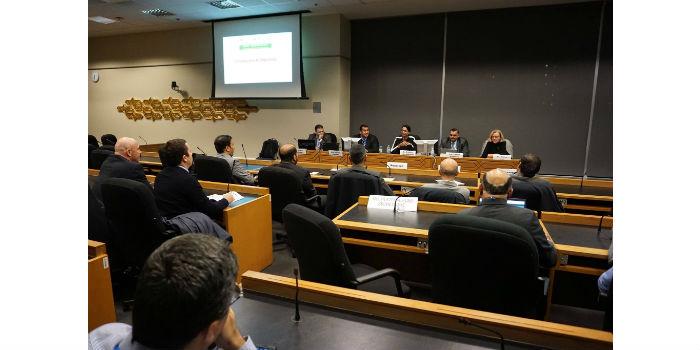 International. Developing countries will receive US$540 million under the Montreal Protocol to continue their work on phasing out ozone-depleting hydrochlorofluorocarbons (HCFCs) and initiate activities in support of the phase-out of hydrofluorocarbons (HFCs) under the Kigali Amendment.
International. Developing countries will receive US$540 million under the Montreal Protocol to continue their work on phasing out ozone-depleting hydrochlorofluorocarbons (HCFCs) and initiate activities in support of the phase-out of hydrofluorocarbons (HFCs) under the Kigali Amendment.
The funds will be provided by developed countries during the period 2018-2020 through the Multilateral Fund for the Implementation of the Montreal Protocol, which has disbursed more than US$3.7 billion since 1991 to help developing countries phase out ozone-depleting chemicals.
The Parties to the Montreal Protocol made the funding commitment during the 11th joint meeting of the Conference of the Parties to the Vienna Convention and the 29th Meeting of the Parties to the Montreal Protocol, held in Montreal from 20 to 24 November.
The parties also celebrated the thirtieth anniversary of the ozone-saving treaty during the meeting with high-level participants, including former Canadian Prime Minister Brian Mulroney.
Energy efficiency
The parties requested the Technology and Economic Assessment Panel of the Montreal Protocol (TEAP) to assess technological options to improve the energy efficiency of appliances and equipment in the refrigeration and air conditioning sectors while eliminating HFCs under the Kigali Amendment.
The panel will also assess, among other topics, the challenges to the adoption of these technologies, their long-term sustainable performance and viability, their environmental benefits and related costs.
The parties also agreed to hold a workshop on opportunities to improve energy efficiency while eliminating HFCs during their 40th open-ended Working Group meeting in July 2018.
Safety Standards
The parties also requested regular updates on relevant safety standards for the use of flammable alternatives with low global warming potential to HFCs, in consultation with the relevant standards organisations.
Kigali Amendment
The meeting also urged Parties that have not yet ratified the Kigali Amendment to consider doing so to achieve the objectives of the Amendment.
The Amendment, which has so far been ratified by 22 parties, will enter into force on January 1, 2019 and requires the nations of the world to gradually decrease HFCs by more than 80 percent over the next 30 years and replace them with more planet-friendly alternatives.
The progressive reduction of HFCs under the Protocol is expected to prevent up to 0.5°C of global warming by the end of the century, while continuing to protect the ozone layer.
Ozone control and observation
The parties also agreed on the need for greater support for research and systematic observations of the ozone layer, since through observations scientists can monitor the recovery of the ozone layer and the interaction between ozone and climate.
Ministerial Round Table
The meeting also included a roundtable of environment ministers from around the world moderated by the 2016 UN Environment Champion, Leyla Acaroglu, which focused on the future opportunities and priorities of the Montreal Protocol.
Science Panel Discussion
In addition, a science round table was held on the theme "The scientific basis of the Montreal Protocol: past, present and future". Leading scientists from several countries discussed the effect of changing atmospheric composition on the ozone layer; ozone depletion and climate change; and observations and monitoring needs for the protection and recovery of the ozone layer.
Ozone Awards
The meeting also included an awards ceremony to honor individuals, groups, organizations and parties that have demonstrated extraordinary commitment and contribution to the progress and achievements of the Montreal Protocol, especially over the past 10 years.
The 197 parties to the Montreal Protocol also received specially designed certificates in recognition of their tireless effort, commitment, passion and dedication to the protection of the ozone layer over the past 30 years.
Source: The United Nations Environment Programme.














